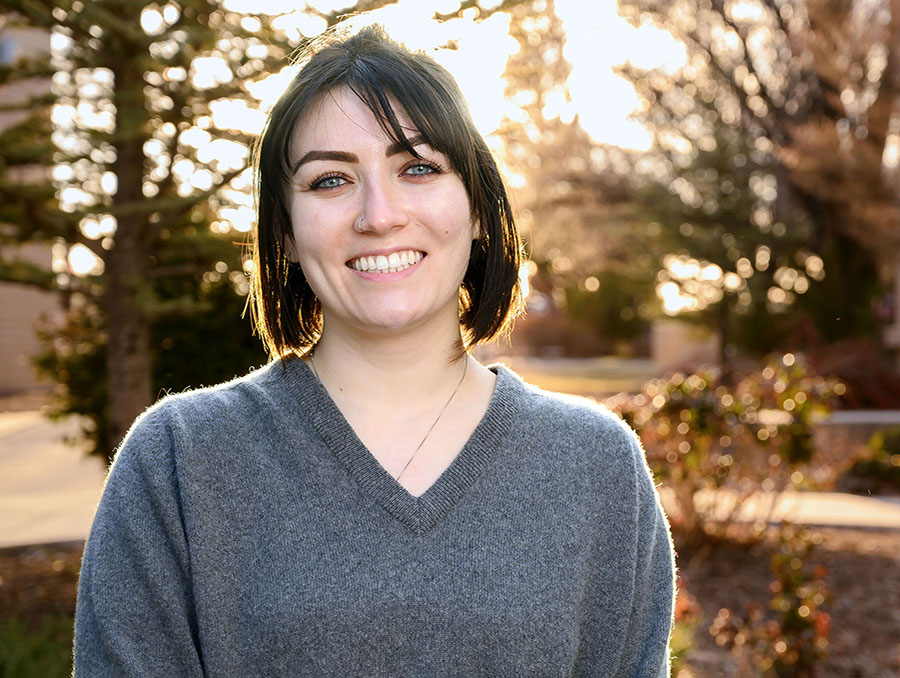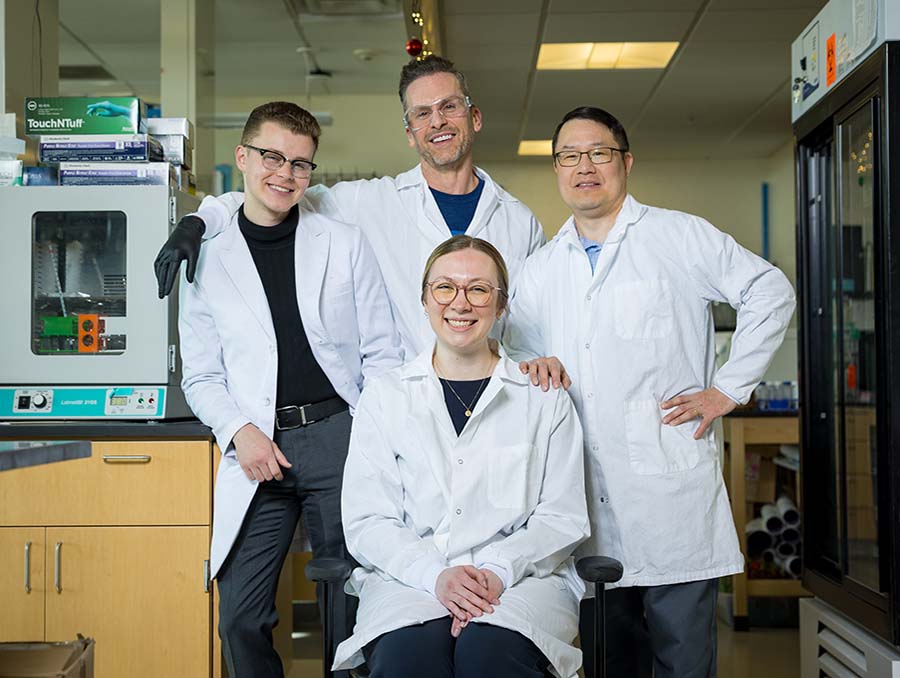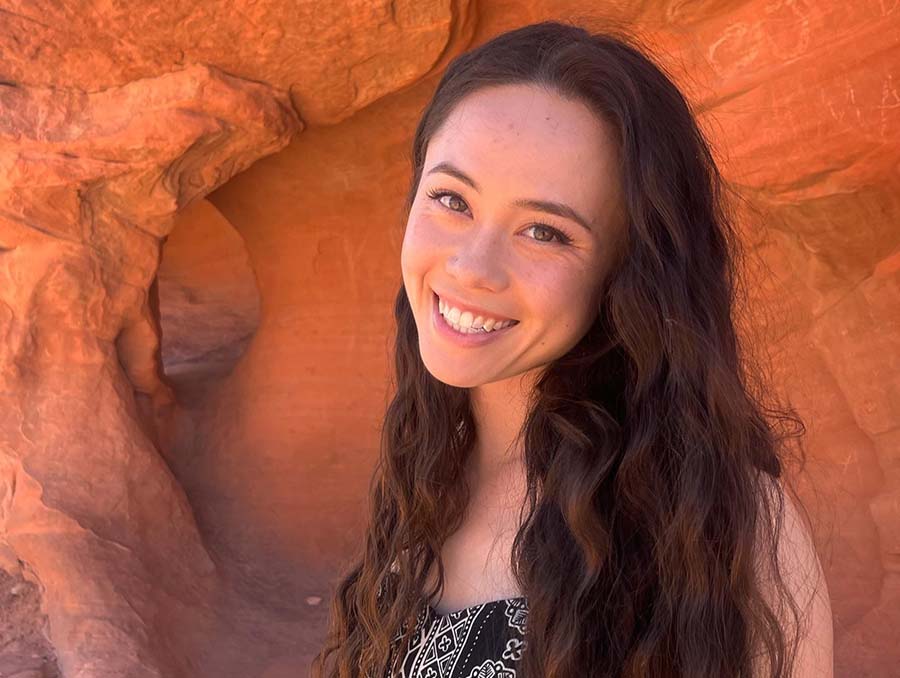About 100 University of Nevada, Reno School of Medicine (UNR Med) medical and physician assistant students listened quietly while Starla Cassani told them about the hours after her 14-month-old son, Colby, drowned in 1993.
During the tragic and painful time while their son was being kept alive by machines, Starla and her husband, Dr. John Cassani, waited in the hospital following their son’s accident. They needed compassion, and they needed answers. With a career’s worth of experience in family medicine, the couple understood the importance of organ donation. However, a cold, brash surgeon nearly convinced them not to sign off on the procedure that could help Colby save other people’s lives, even as he lost his own.
Luckily, another doctor compassionately explained the process and helped the parents come to terms with the choice to donate Colby’s organs. Doctors immediately found a child, Brayden, who needed a new heart and presented as a match. About three years later, the Cassani’s met Brayden, happy and healthy, on the tarmac of the Denver airport. John and Starla pressed a stethoscope against Brayden’s chest and cried with joy as they heard their son’s heart saving another life with every beat. The family still keeps in touch with the now 31-year-old Brayden.
During the program, UNR Med students cried with the family and smiled at their success as Starla and other speakers shared their stories about organ donation and empathy. The Cassani family and other guests stayed long after their presentations to talk with students and answer their tough questions.
Through the Colby Foundation and the Cassani Lecture, Colby has likely saved countless other lives as a result of the foundation the Cassani’s started in his name, which promotes organ donation education to medical students nationwide, like Skotti Torrence, a second-year student at UNR Med.
“It’s hard to listen to someone talk about the death of their 14-month-old, but then you get to hear the story about how they came to terms with that and got to hear their son’s heart beating again,” Torrence said.
The presentations help educate medical students and impress upon them the importance of understanding the organ donation process and seeing the people it affects, said Torrence who founded the first medical school chapter of the Student Organ Donation Advocates (SODA) at UNR Med as a first-year medical student.
“We bring organ recipients and family members of organ donors to share their stories with the medical students to help them better empathize with their future patients and develop a greater understanding of what those patients are going through,” she said.
Evolving into the new role
Organ donation is a topic Torrence has invested in with her whole heart. Before her first year of medical school, she also introduced SODA to the University campus as an undergrad in 2018.
SODA nationally started in 2014 when another student at Washington University in St. Louis experienced the power of organ and tissue donation first-hand as a recipient. Much of the organization's work revolves around education and myth-busting in coordination with other local and national organizations to register students as organ donors.
As an undergraduate, Torrence focused primarily on educating undergrad students and the public about organ donation and boosting registrations along with the national chapter. One of the more pervasive myths that Torrence hears is that doctors or EMTs won’t try to save organ donors because they want to harvest their organs. This is patently untrue. Other myths revolve around the age and health of a donor or recipient. Many of these myths, though wrong, scare people into avoiding registration.
Now, as a medical student, she focuses on helping future doctors who will one day find themselves in a waiting room with people who, like the Cassani’s, need empathy and education in the face of a heartbreaking situation.
This mission is not how the traditional SODA chapter is set up, but Torrence said the national board was impressed with her approach and gave it their blessing. Her audience changed from 20,000 undergraduate students to 250 students who know all about human anatomy and need less convincing to sign up to become a donor and get informed.
“I feel like we should get more information on organ donation in general, what the process is, what’s the process for getting an organ, who is and isn’t qualified to give,” Torrence said.
The chapter’s new goal is to create well-rounded physicians who, no matter their specialty, can have difficult conversations with patients. Hospitals often employ organ procurement specialists who walk patient’s families through the process. Still, Torrence said patients and their families should also be able to ask their doctors for that information.
“As a patient, it’s hard to think about the fact that there are different types of doctors, and some have a narrow field, and some have a broad field,” she said. “Whether it’s a surgery that goes wrong or a patient who goes into the emergency department, it’s important to have those discussions and share that knowledge when making end-of-life plans.”
Teaching empathy to future doctors
Since UNR Med’s first class in 1974, the school has focused on training students to consider mental health. Torrence’s work with SODA continues that legacy by introducing students to complex topics around life, death, grief and acceptance.
“How many surgeons think to ask how your mental health is doing since you got this new heart?” Torrence asks rhetorically. “Someone doing well physically may not be doing well mentally, especially knowing their survival means someone else’s death. It’s important to see the human-to-human interaction. We’re all people and people taking care of people.”
In addition to ongoing medical education, the UNR Med SODA chapter works with other national and local organizations to enhance programming and help complete their mission. Torrence works to register people for the National Marrow Donor Program (NMDP) and Sierra Nevada Donor Awareness Donor Walk, among other programs that help raise funds and awareness for lifesaving organ and tissue donation.
“Every year, we bring in more students who want to get involved,” she said. “It’s all a trickle-down effect. Every person who knows a little more can spread factual information and help snuff out the myths. People aren’t going to trust something they don’t understand.”
While she finishes her degree, Torrence can continue to serve each new year of cohorts. Once she transitions to third year, she will happily pass the work on to another student to take on the chapter.
“It’s truly rewarding to have an impact in this way and to hand this off someday,” she said.















